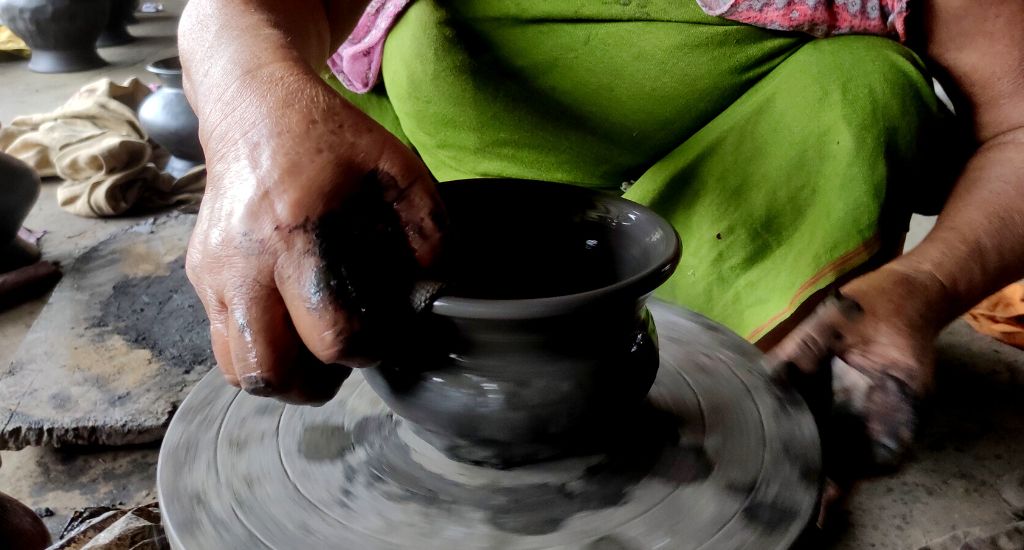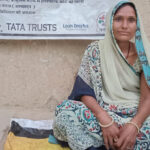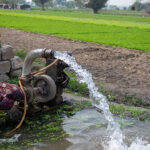It’s been said that if you don’t like pottery or earthenware when you first visit Manipur’s Thongjao village, you’ll certainly become a fan by the time you leave.
For it’s impossible not to appreciate the signature red pottery and its intrinsic connection with Manipur’s culture and the creative spirit of the indigenous Meitei people who keep it alive.
While the preference for plastic items has hurt most pottery industries around the world, Manipur potters are still turning a profit, thanks to local festivals and rituals in which earthenware is still preferred.
Potted history of Thongjao pottery
Pottery began in Thongjao, 66km from Imphal city in modern-day Kakching subdivision of Thoubal district, as a royal decree 500 years ago.
No ritual, religious or ceremonial, is complete without them.
The potters’ settlement supplied hardware – pots, pans and pitchers – to salt-makers who turned briny spring water into round salt cakes called thumpak. Both crafts are living examples of Meitei legacy, though Thumpak is struggling against modern packaged salt.
But the slow-fired red pottery of Thongjao has transitioned smoothly into 21st century commerce.

Anchoring this craft are guardians of the artform, like Shamje Hsabam Monbi, 68, who got her mitts on pottery early on. She learned from her mother every aspect of turning clay into whatever her mind could imagine.
‘Land of Pottery’
There are around 650 artisans living in Thongjao.
Many of whom will happily share the brief history of its pottery or even pass along pots filled with pungent fish dishes or the potent local brew to visitors.
But the village gained its contemporary reputation as the ‘Land of Pottery’ after its products were shipped outside Manipur to a niche urban clientele, initially passed off as avant-garde art.
Smart marketing pushed the price tag and many potters profited from the trickle-down effect.
Also Read | How Manipur’s rural women are weaving wonders from Kauna weed
“The government is helping the potters find new markets,” said E. Jeeten Singh, joint director of handloom and textiles.
Pick up some clay
Meitei pottery is known for its two distinct colours – black and an earthy red.
The black earthenware comes from Longpi or Nungbi village of the Tangkhul community, while Thongjao’s signature is a scarlet tan. Both styles require a certain type of black clay found in the region, but the firing process sets them apart.
First, the clay called leitan leimu in Meitei, is extracted from pits 10-feet deep.

“We then mix the mud with a whitish clay and sand,” said Shamje, the soft-spoken artisan with a certain eagerness to show her collection of clay pitchers laid out on the courtyard.
Also Read | Ferocious river threatens potters’ livelihood
“The kneaded clay mixture is then rolled into a coil and given a shape. It’s flattened on an anvil with the help of a rectangular beater we call phunjei,” she added.
The pots are shaped with vigorous anti-clockwise finger movements.
Something to note is that Meitei pottery traditions rely on coiling strands of clay into an array of shapes and sizes – without a spinning wheel.
Pots, plates or figurines are often fired near the ground within improvised outdoor kilns. The pieces go through two separate firing processes to get their high-gloss sheen.
Also Read | A young woman engineer spurs hope for pottery in Kashmir
“The pottery is black before they go to the kilns, where they are staked over a bed of bamboo and covered with layers upon layers of slow-burning rice husks. Bundles of paddy straw make the final layer. These are fired for at least a week and the heat gives the pots their characteristic red colour,” Shamje said.
The process, technique and tools harken back to a lost time. But the pitfalls of modernity have produced certain conspicuous changes.

The potters now rely heavily on hired hands to haul out clay from earth’s bowels, backhoes have replaced shovels, while erratic rainfall because of climate change is taking a toll on the outdoor kilns.
I opened this shop around ten years ago and have been making a good profit. Many tourists buy our pottery to add exclusivity to their home décor
There’s always the stingy wholesaler to reckon with too. All these eat into a potter’s profit. Yet even so, this is still a profitable trade for the local potters.
Demand dip? Not yet
“I make around Rs 8,000 a month, working eight-hour shifts. Sales surge during festivals,” said Shamje.
While aluminium and plastic pots have rear-ended the traditional pottery business in most states, never mind the rest of the world, Manipur’s pottery has actually flourished.
“We still make around 45 pieces a month and earn around Rs 7,000. We aren’t facing a dip in demand because clay pottery is still used in our homes and no ritual, religious or ceremonial, is complete without them. Also, pitchers are in use to store fermented fish and liquor,” said S. Purnmia Devi, 77, another artisan.
T. Bala Devi, 70, sells pottery in Ima Keithel, a market in Imphal run exclusively by 3,000 women.
“I’ve been in this trade for 40-plus years. I’ve been to Maharashtra where my daughter lives and found potters unable to make ends meet. No such problem here,” she said proudly.

The village is dotted with tin-roof shacks selling pottery for everyday application – including those used for stowing away heady substances – as well as figurines, toys and wind chimes.
“I opened this shop around ten years ago and have been making a good profit. Many tourists buy our pottery to add exclusivity to their home décor,” Bheigya Chandra Singh, 60, said. Thongjao’s proximity to the frontier town of Moreh – about 85km southeast – on the India-Myanmar border has brought additional benefits.
Also Read | In Gandhi’s Gujarat, potters keep shine on Hindu-Muslim amity
“People travelling on this route swing by and buy our products,” he said.
Younger artisans like Athokpam Angoubi, 40, are giving this hand-crafted art a modern spin.
“We make figurines of animals, gods and goddesses, princes and princesses. We paint them in bright colours. And we sell a lot of piggy-banks to tourists.”
The lead image at the top shows delicacy required to shape these earthen pots (Photo by Gurvinder Singh)
Gurvinder Singh is a journalist based in Kolkata.








